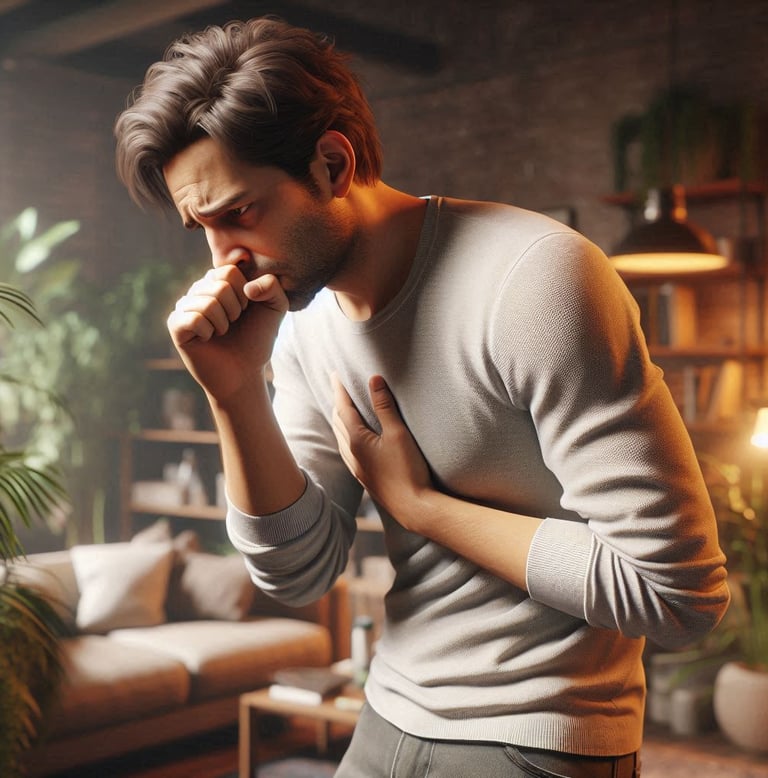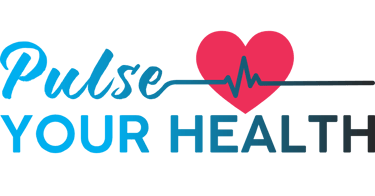Stay updated on what is trending in health. Discover tips and resources for a healthier, balanced life.
What Is COPD? Understanding a Common but Serious Lung Condition
Learn what COPD is, its causes, symptoms & how to manage this common lung condition. This helpful guide offers clear, everyday tips for prevention & treatment.
DISEASES AND CONDITIONS
Dr. S. Ali
9/7/20254 min read


Chronic Obstructive Pulmonary Disease, or COPD, is a long-term lung disease that makes it hard to breathe. It includes conditions like chronic bronchitis and emphysema, which cause airflow blockage and breathing-related problems. If you often feel short of breath or have a persistent cough, especially if you’re a smoker or have a history of exposure to lung irritants, COPD might be the reason.
It’s more common than you think—millions of people worldwide live with it, and many don’t even know they have it.
What Causes COPD?
The main cause of COPD is smoking. In fact, most people diagnosed with COPD have a history of smoking. But smoking isn’t the only factor:
Exposure to air pollution
Secondhand smoke
Long-term exposure to dust, fumes, and chemicals
Genetic factors (like alpha-1 antitrypsin deficiency)
Some people never smoked a day in their life but still developed COPD due to poor air quality or occupational exposure.
Common Symptoms of COPD
COPD symptoms usually develop slowly. You may not notice them at first, or you may brush them off as signs of aging. Here’s what to watch out for:
Frequent coughing (with or without mucus)
Shortness of breath, especially during physical activity
Wheezing
Chest tightness
Feeling tired all the time
Frequent colds or respiratory infections
If these sound familiar, it’s a good idea to talk to your doctor about getting tested.
How Is COPD Diagnosed?
A simple test called spirometry is used to diagnose COPD. It measures how much air you can breathe in and out and how fast you can blow air out. Your doctor might also order:
Chest X-ray or CT scan
Blood tests
Pulse oximetry (to check oxygen levels in the blood)
Early diagnosis can help you manage the condition and improve your quality of life.
Living with COPD: Can It Be Treated?
While COPD cannot be cured, the good news is that it can be effectively managed, especially when diagnosed early. With the right treatment and lifestyle changes, many people with COPD can enjoy a good quality of life and remain active for years.
Here’s a closer look at the main treatment options:
1. Quitting Smoking
This is the single most important step in treating COPD. Smoking damages the lungs and worsens symptoms over time. Quitting slows the progression of the disease, reduces flare-ups, and improves your overall health. Even if you’ve smoked for years, it’s never too late to quit.
2. Inhalers and Medications
Medications help open the airways, reduce inflammation, and make breathing easier. These may include:
Bronchodilators – to relax airway muscles and improve airflow
Inhaled corticosteroids – to reduce lung inflammation
Combination inhalers – a mix of bronchodilators and steroids
Oral medications – sometimes used during flare-ups or severe cases
Antibiotics – may be prescribed during infections to prevent complications
Your doctor will personalize your medication plan based on the severity of your symptoms.
3. Pulmonary Rehabilitation
This is a supervised program that combines:
Exercise training to improve lung function and stamina
Education on managing COPD
Nutritional counseling
Emotional support and breathing techniques
Pulmonary rehab is one of the most effective ways to feel better, breathe easier, and stay active.
4. Oxygen Therapy
For people with low oxygen levels in their blood, supplemental oxygen can help reduce shortness of breath, improve sleep, and enhance quality of life. It can be used short-term (during activity) or long-term depending on your needs.
For people with chronic low oxygen levels, doctors may prescribe home oxygen therapy to ensure their body gets the oxygen it needs throughout the day and night. Here’s how it works:
Home Oxygen Therapy
Some people with COPD have low oxygen levels in their blood. In these cases, doctors may recommend oxygen therapy at home to help them breathe better and feel more energetic.
Here’s what that means:
How oxygen is given: You’ll breathe oxygen through soft tubes that sit just inside your nose (called a nasal cannula) or through a face mask. These are comfortable and designed for daily use. These tubes are connected to either an oxygen concentrating machine or oxygen tanks.
How oxygen gets to you: The oxygen flows through the tubes from a machine or tank placed safely nearby. Most people use an oxygen concentrator, a small machine that stays in your home.
Where oxygen comes from: An oxygen concentrator pulls in the regular air around you, filters out other gases, and delivers concentrated oxygen. These machines are safe, quiet, and easy to use.
When you’ll use the oxygen therapy at home: Depending on your condition, your doctor may ask you to:
Use oxygen all the time (day and night),
Use it only while you sleep, or
Use it only during physical activity (like walking or climbing stairs).
Going out: If you want to leave the house, you can use a portable oxygen tank so you can still stay active.
Always follow your doctor’s instructions on how much oxygen to use and for how long. And never smoke or be near flames while using oxygen—it’s flammable.
It’s important to follow the prescribed flow rate and safety guidelines to prevent any risks (like fire hazards from smoking near oxygen).
5. Surgery (for Severe Cases)
In advanced COPD, surgery might be considered. Options include:
Lung volume reduction surgery (LVRS) – removes damaged portions of the lung
Bullectomy – removes large air spaces (bullae) that interfere with breathing
Lung transplant – for younger patients with very severe COPD and no other options
Surgery is typically reserved for those who do not respond well to other treatments.
How to Prevent or Slow Down COPD
Even if you don’t have COPD, it’s never too early to take care of your lungs. Here’s how:
Avoid smoking—or quit if you already do
Protect yourself from secondhand smoke and air pollution
Use a mask if your job exposes you to dust or fumes
Get vaccinated (like flu and pneumonia shots) to prevent infections
Stay active and eat a healthy, balanced diet
Final Thoughts
COPD is a serious condition, but it doesn’t have to take over your life. With early diagnosis, lifestyle changes, and the right treatment, many people with COPD can continue doing the things they love. If you or someone you care about is struggling with breathing issues, don’t ignore the signs—get checked and breathe easier.
Related Articles:
1. Tuberculosis (TB): Causes, Symptoms, Diagnosis and Safety
2. Idiopathic Pulmonary Fibrosis (IPF): What You Need to Know About This Silent Lung Disease
3. Legionnaires' Disease: A Hidden Waterborne Threat
Sources:
Centers for Disease Control and Prevention (CDC)
https://www.cdc.gov/copd/World Health Organization (WHO)
https://www.who.int/news-room/fact-sheets/detail/chronic-obstructive-pulmonary-disease-(copd)American Lung Association
https://www.lung.org/lung-health-diseases/lung-disease-lookup/copdNational Heart, Lung, and Blood Institute (NHLBI) – part of the NIH
https://www.nhlbi.nih.gov/health/copdMayo Clinic
https://www.mayoclinic.org/diseases-conditions/copd/symptoms-causes/syc-20353679Cleveland Clinic
https://my.clevelandclinic.org/health/diseases/8709-chronic-obstructive-pulmonary-disease-copd
Pulse Your Health
Empowering you to achieve your health goals.
Contact
© 2025. All rights reserved.
Disclaimer: The content on this website is for informational purposes only and is not medical advice. Always seek the advice of your physician or other suitably qualified healthcare professional for diagnosis, treatment and your health related needs.
